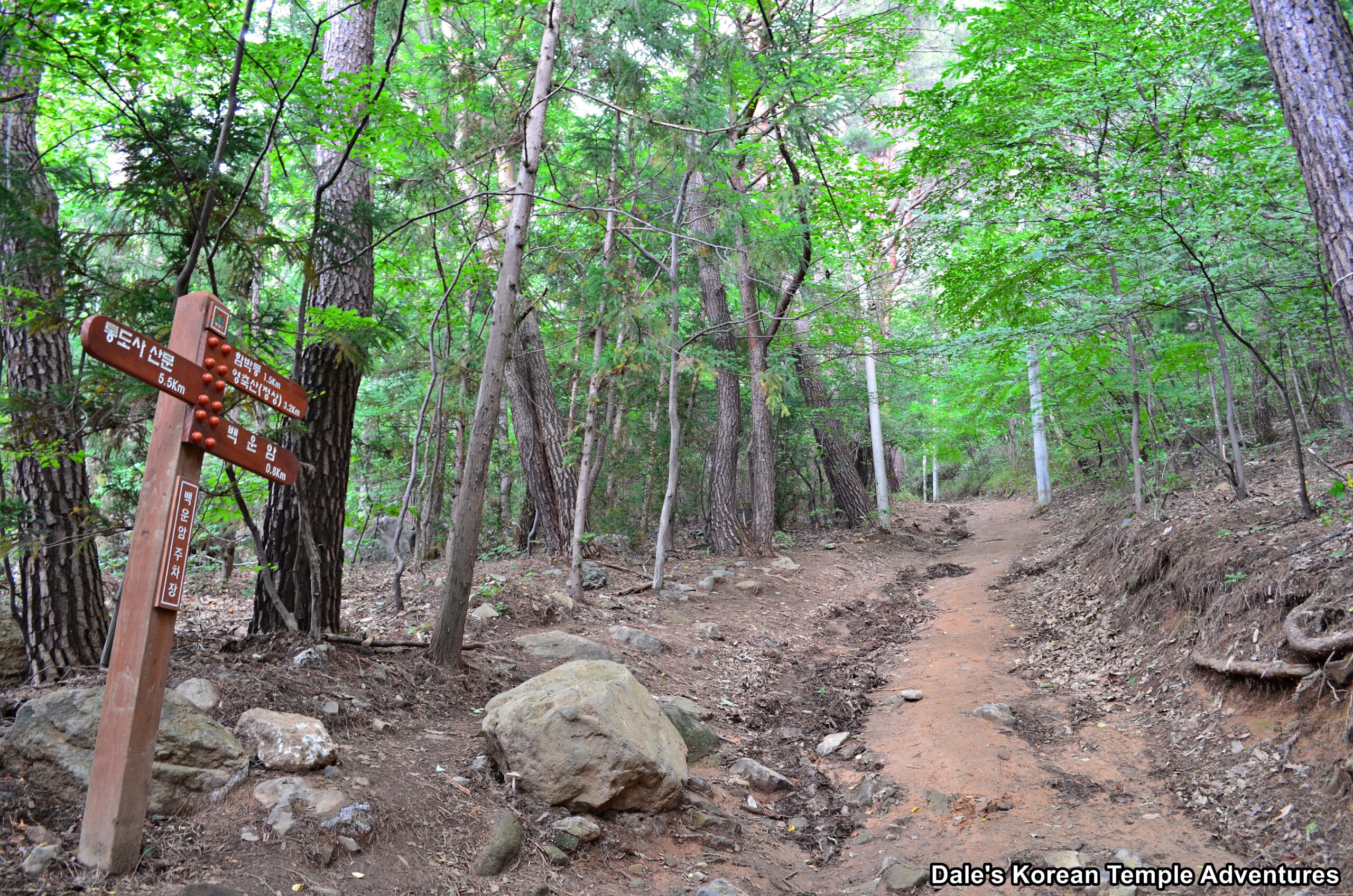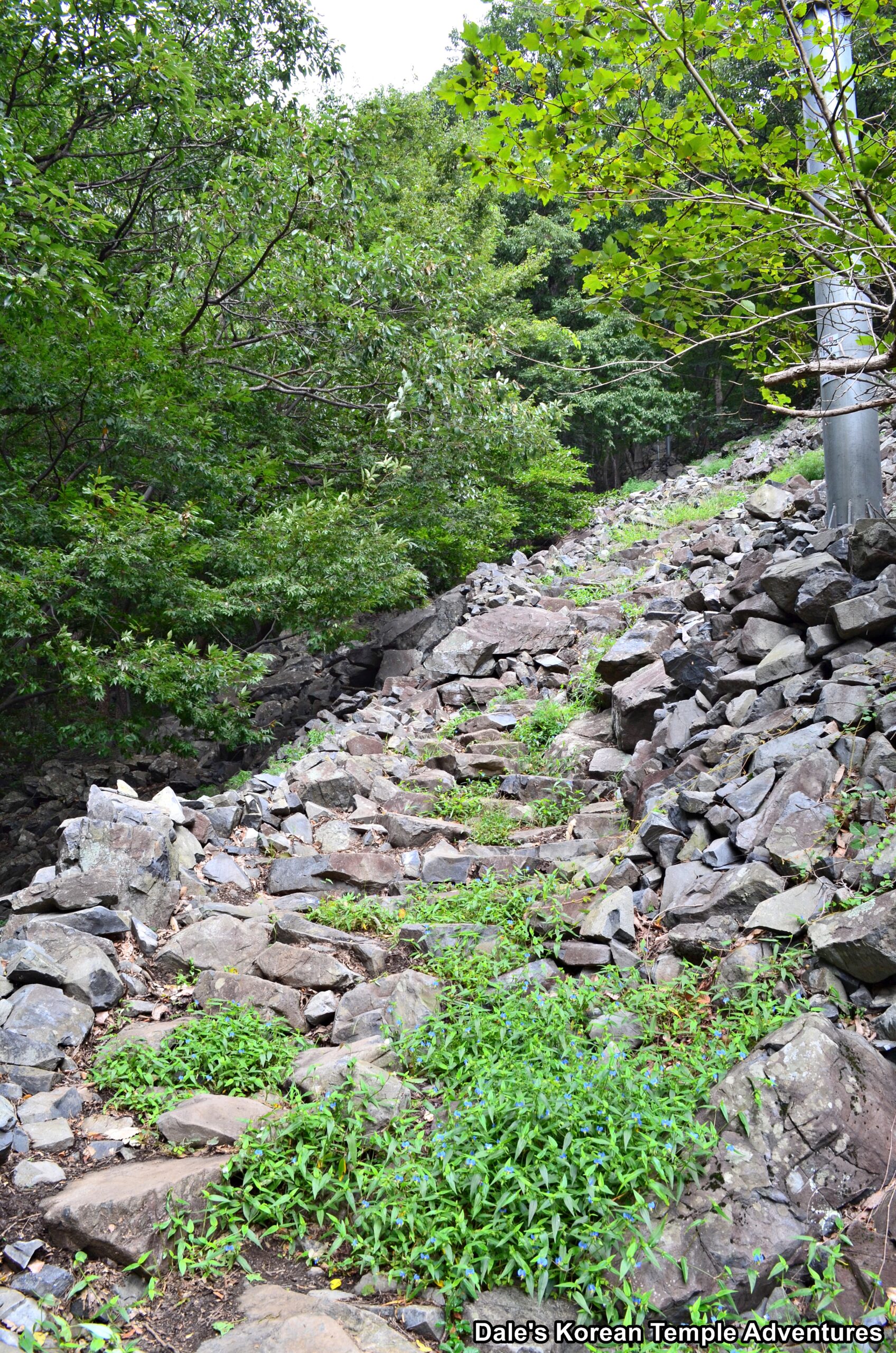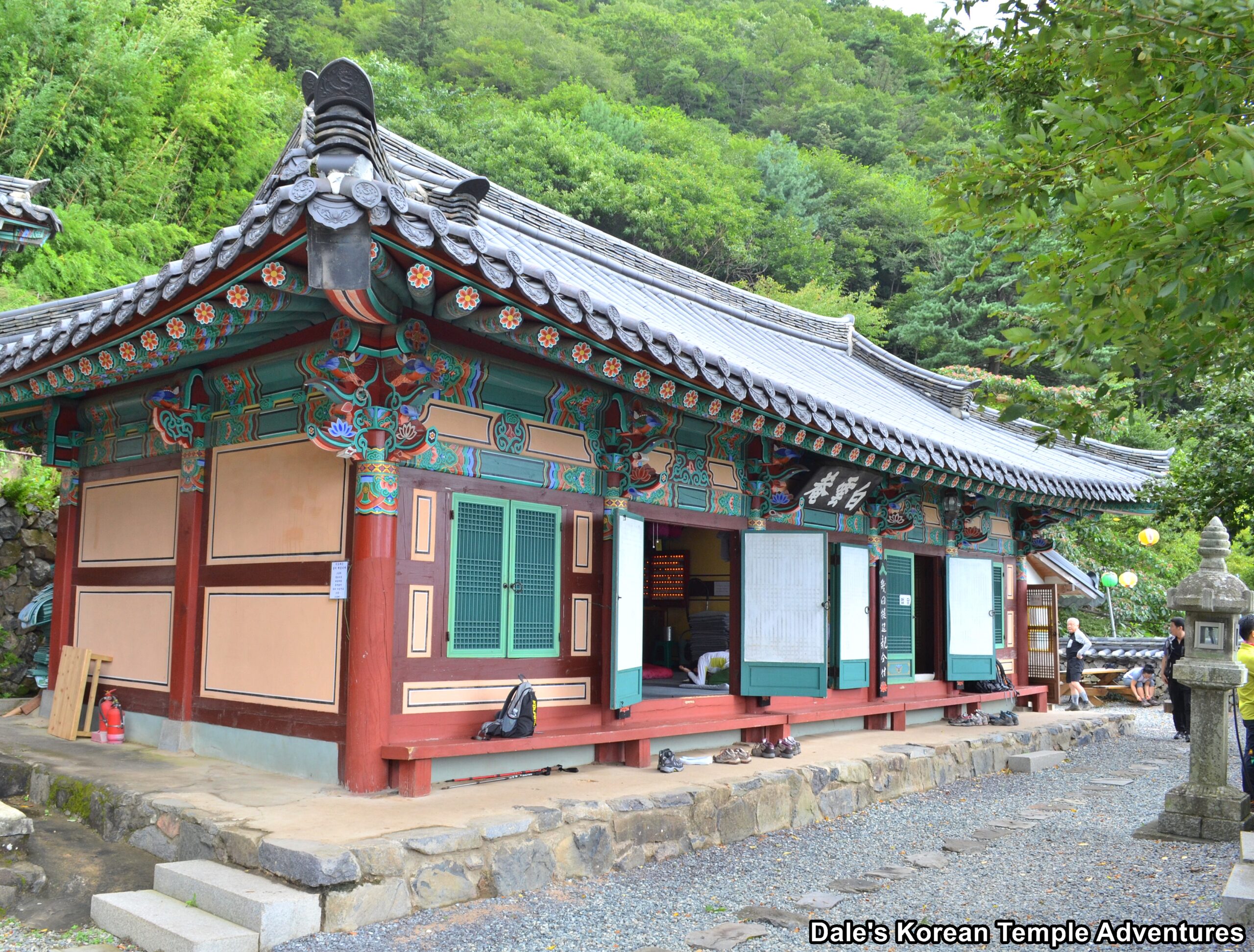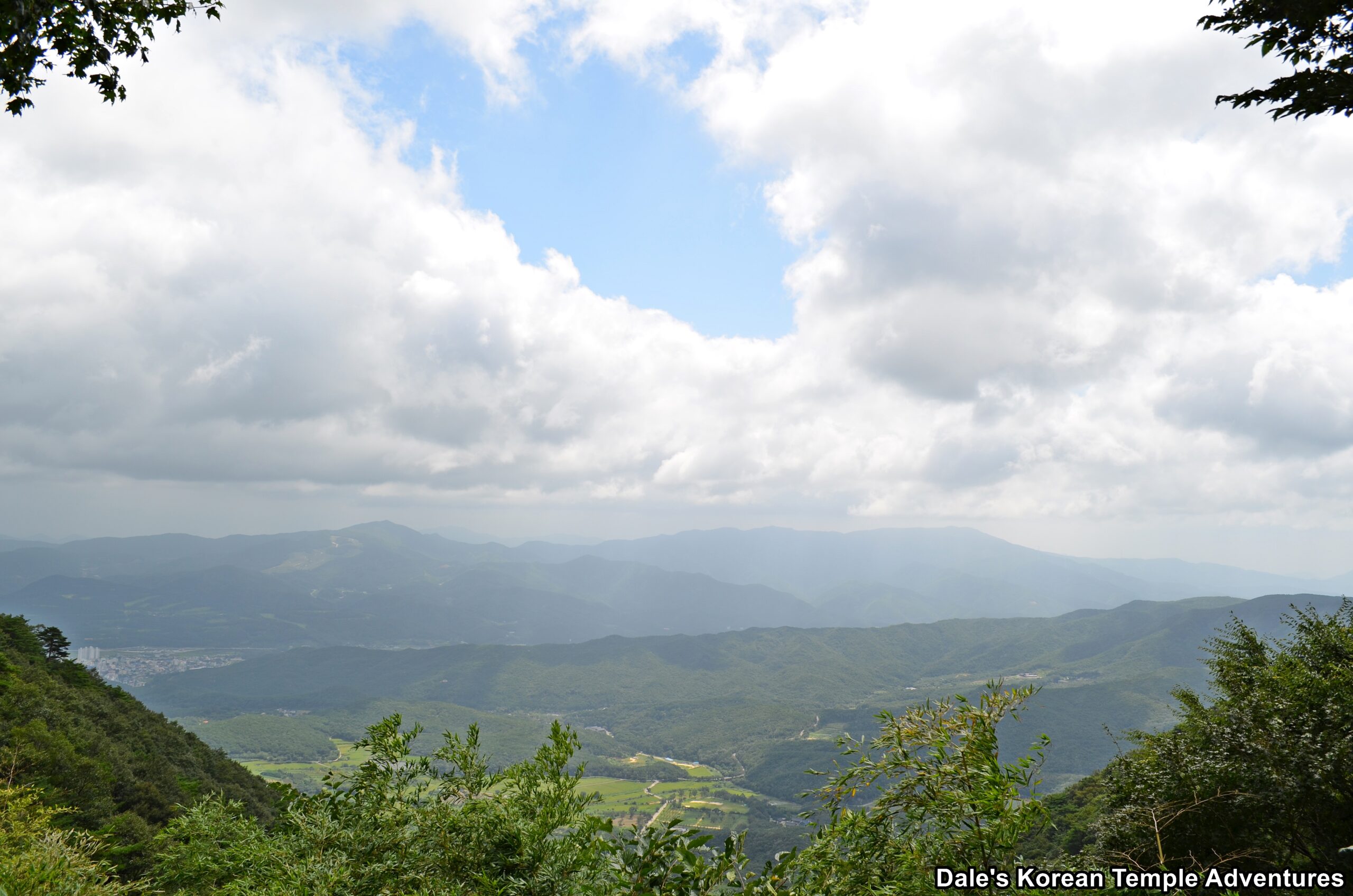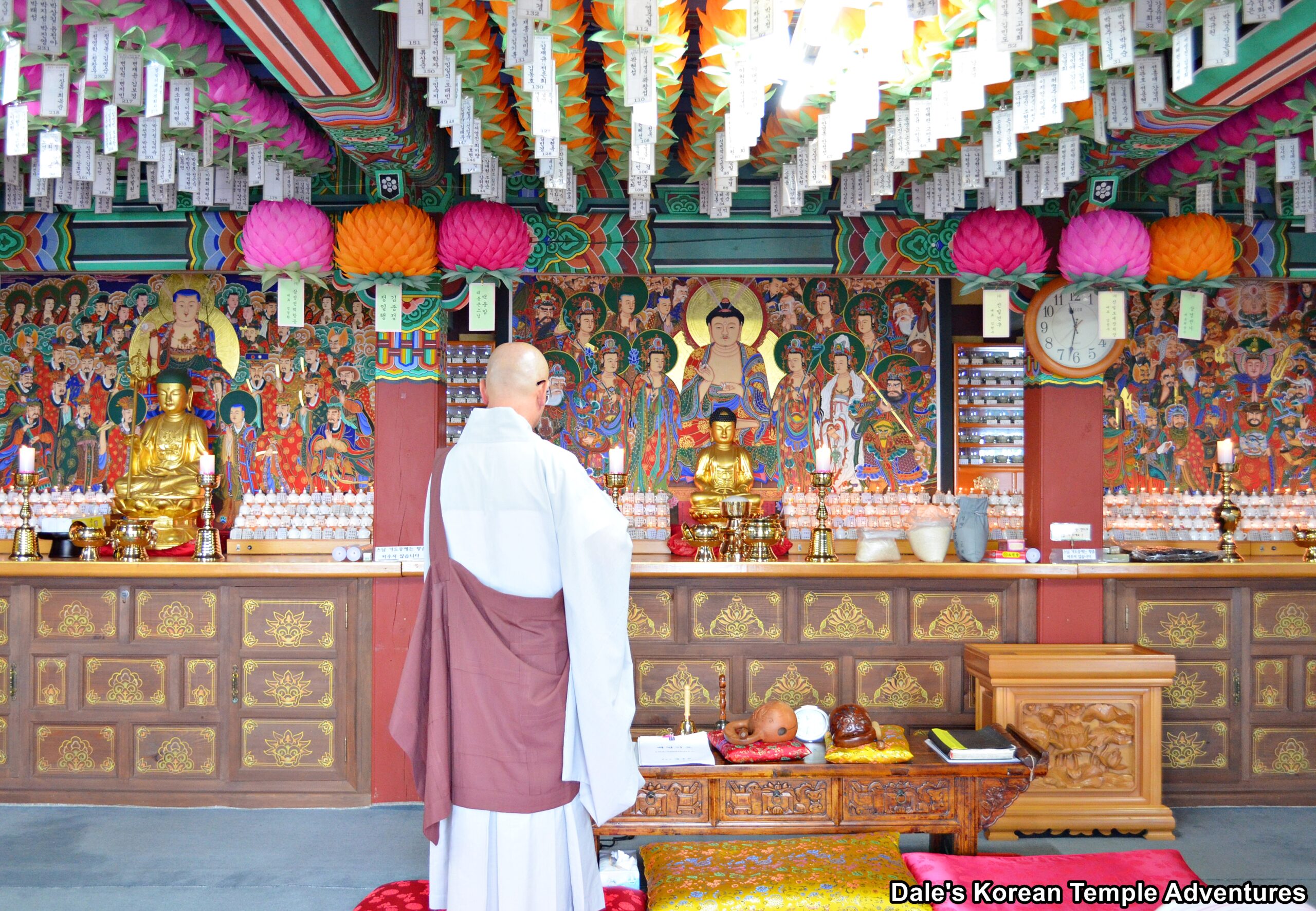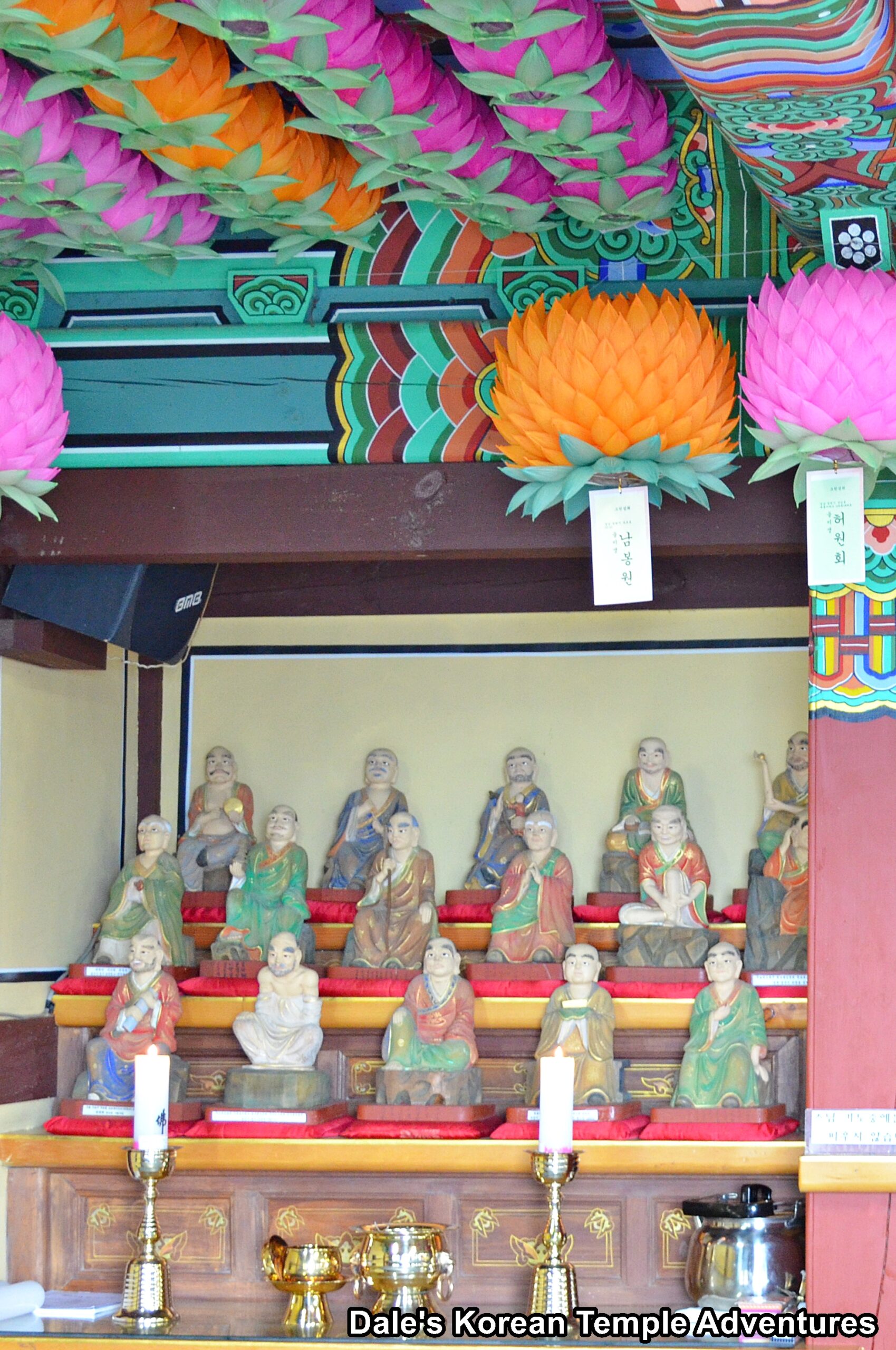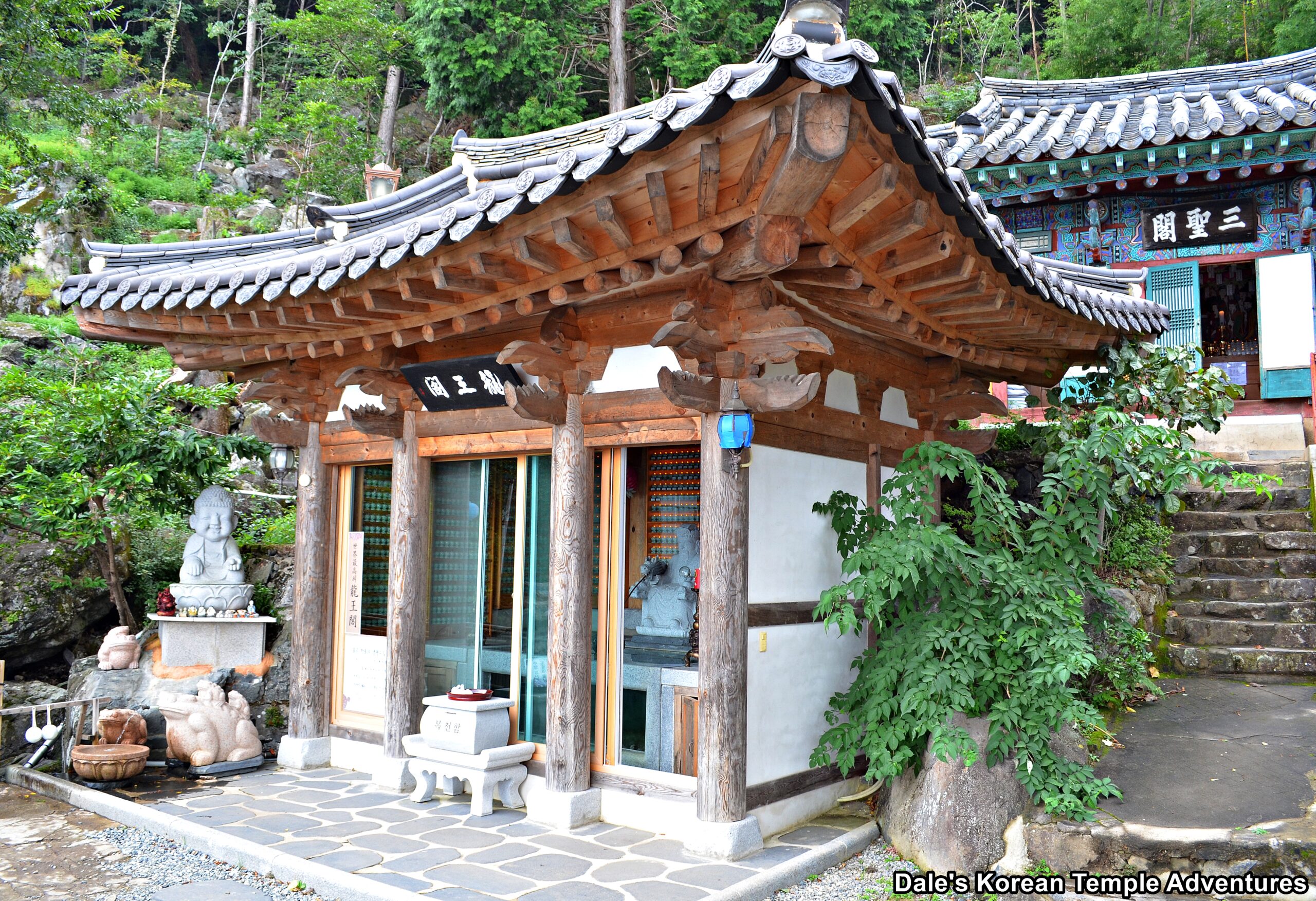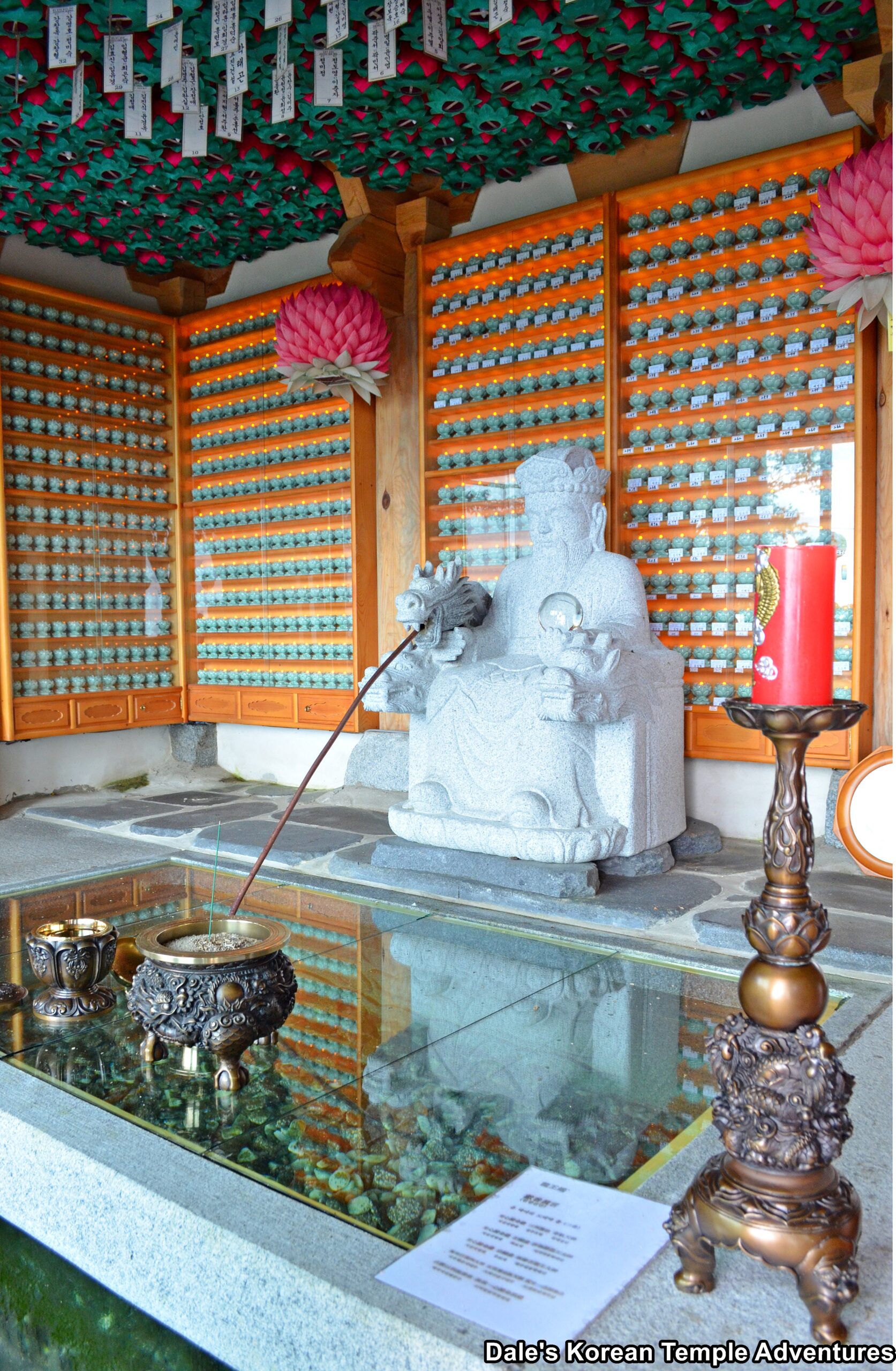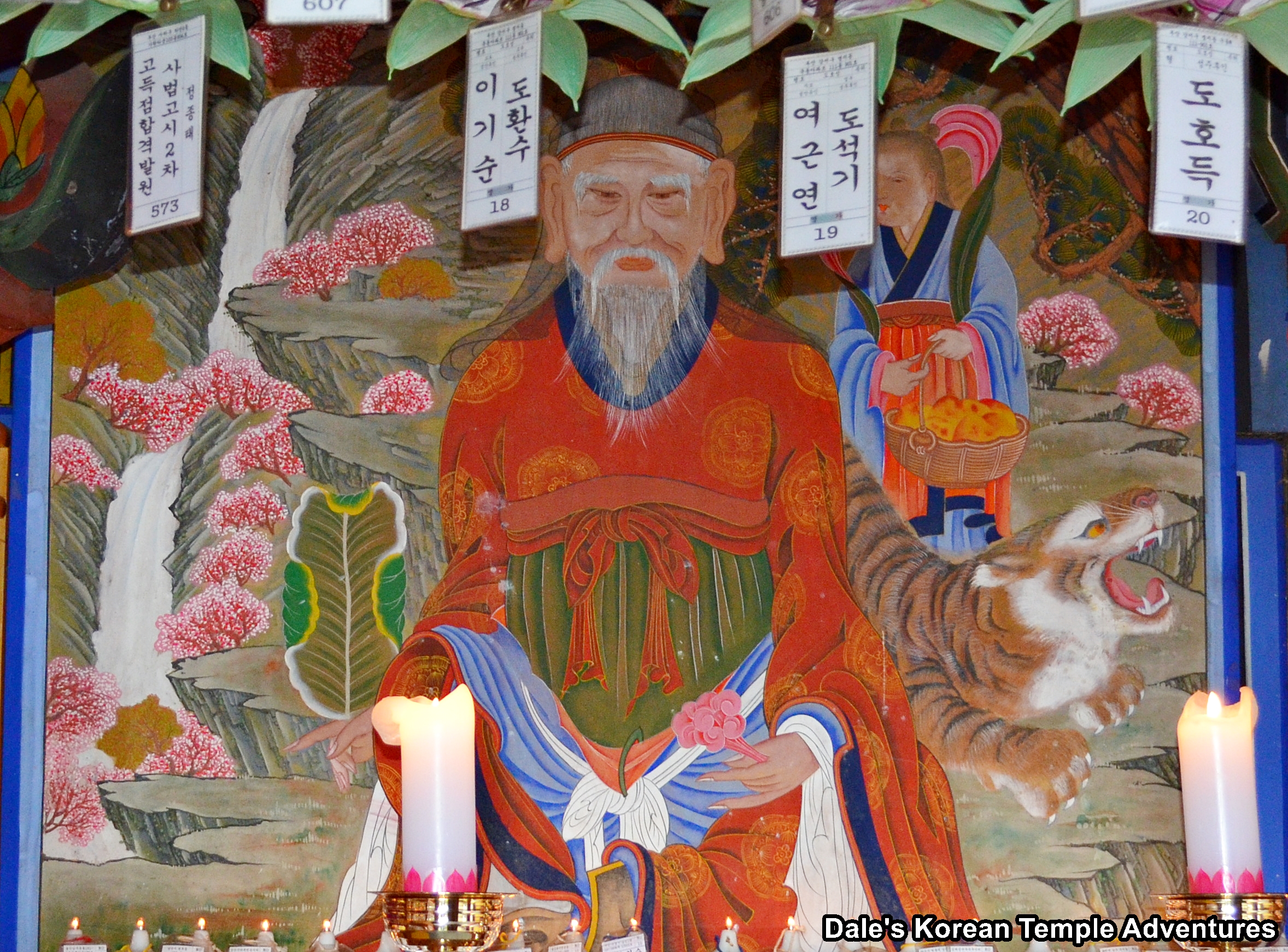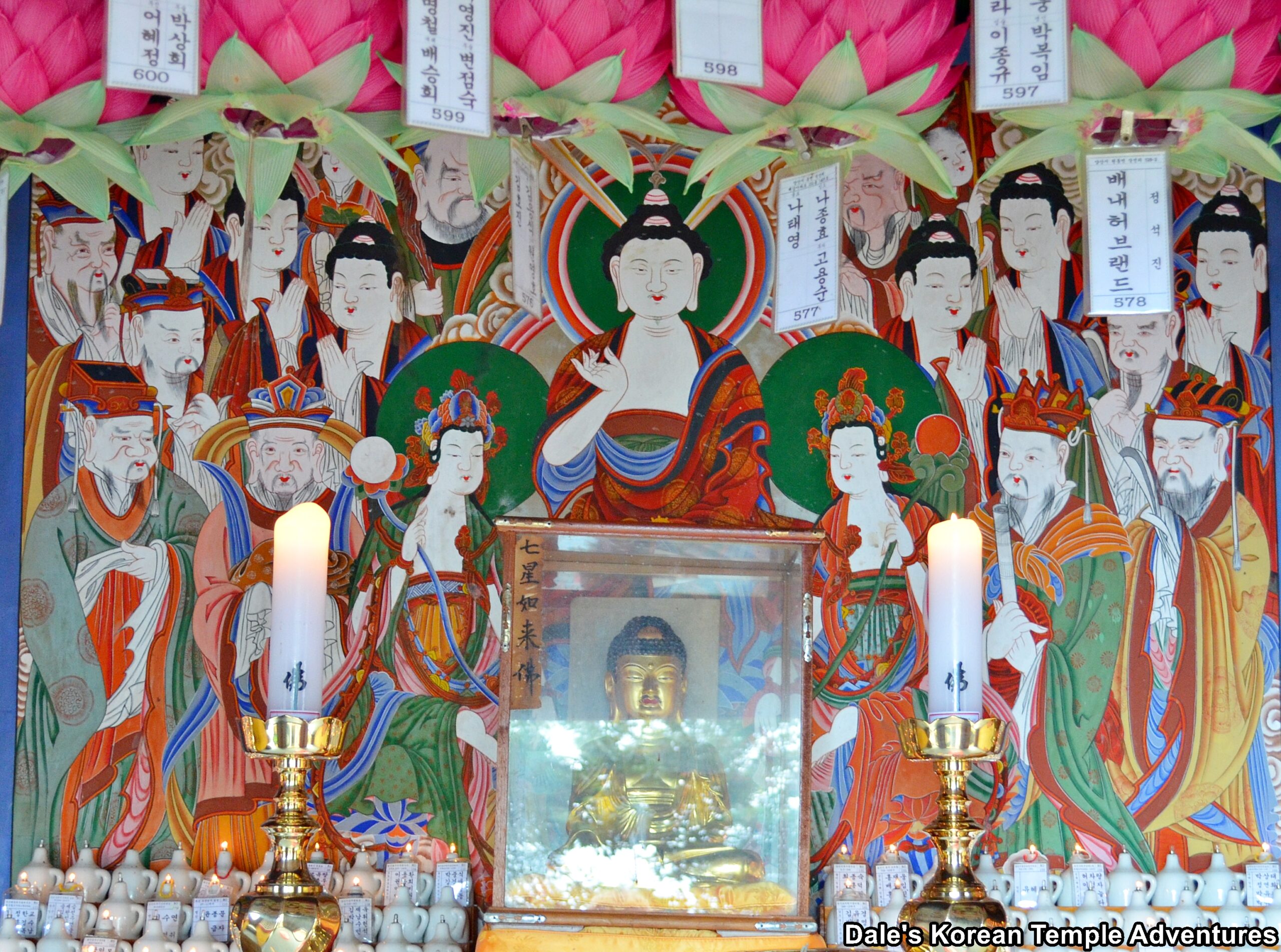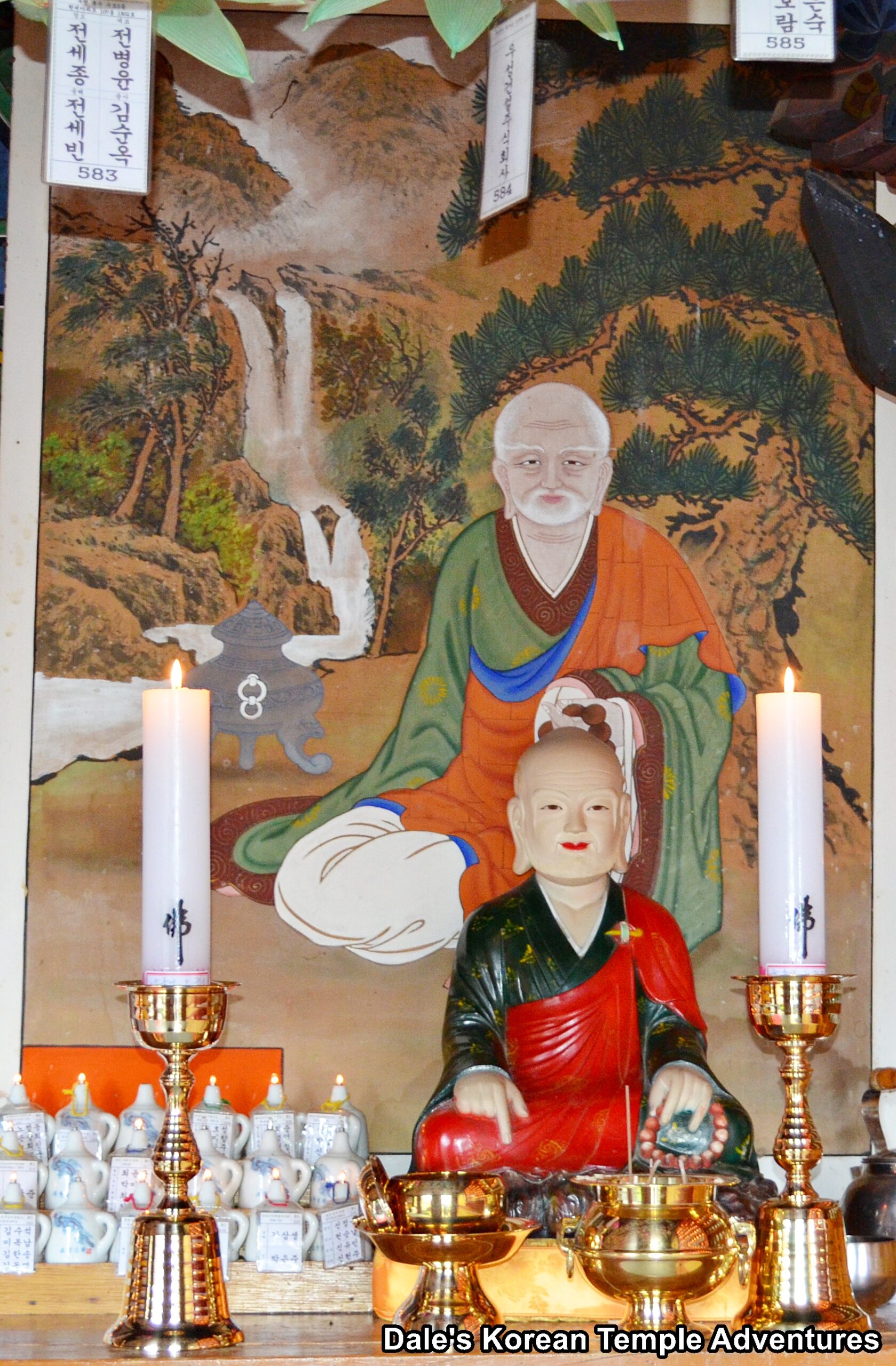Baekunam Hermitage – 백운암 (Yangsan, Gyeongsangnam-do)
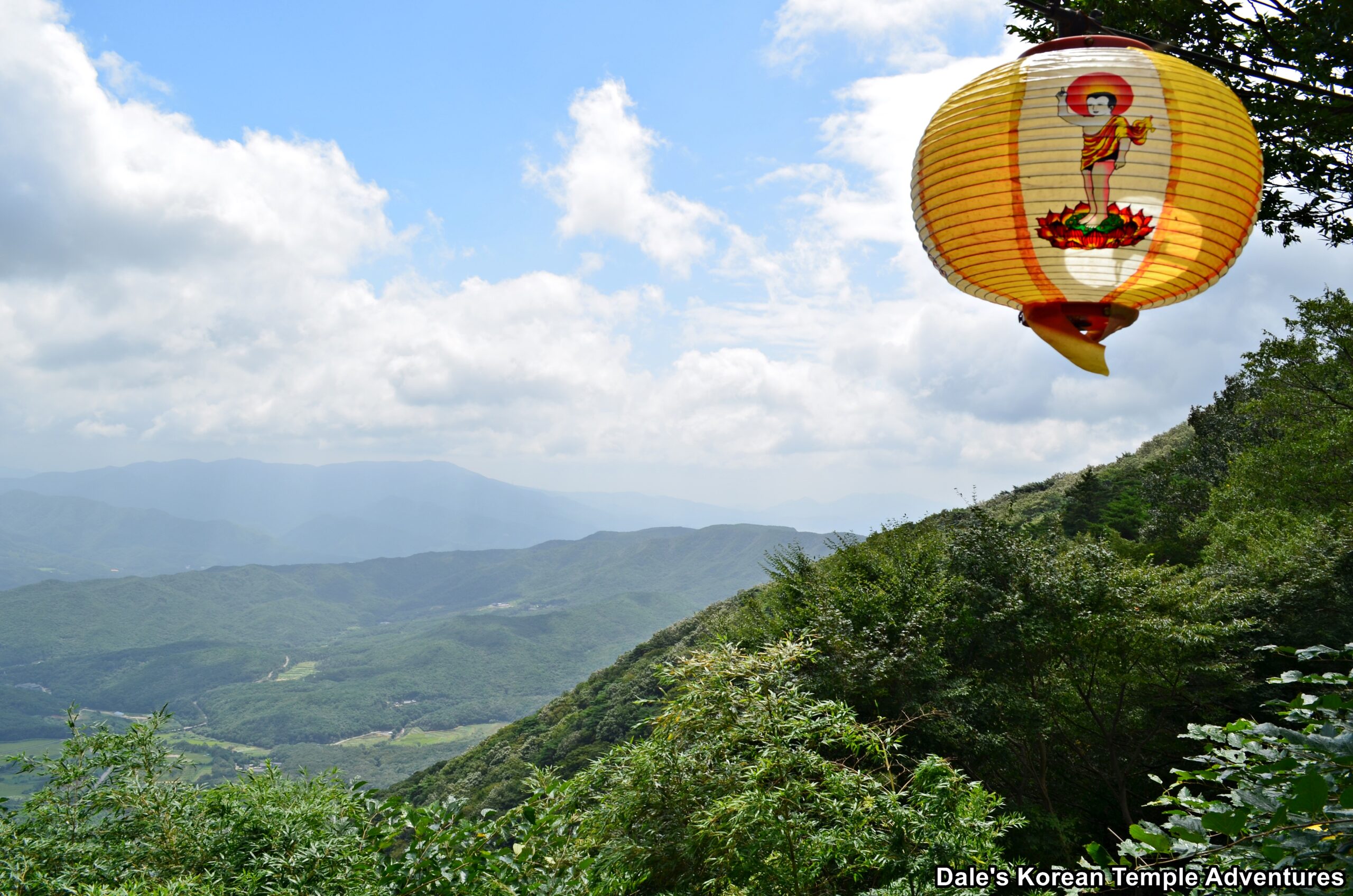
Hermitage History
Baekunam Hermitage is one of the numerous hermitages located on the Tongdosa Temple grounds in Yangsan, Gyeongsangnam-do. Unlike all the other hermitages at Tongdosa Temple, however, Baekunam Hermitage is located halfway up Mt. Yeongchuksan instead of in the foothills of the mountain. Baekunam Hemritage means “White Cloud Hermitage” in English, and it was first established in 892 A.D. in the waning years of Unified Silla (668-935 A.D.) by the monk Jo-Il.
There is not much known about the hermitage from the time it was first established until the early part of the 19th century, when Baekunam Hermitage was reconstructed in 1810 by the monk Chimheo. The hermitage has been home to numerous well-known monks including Mangong (1871-1946). In 1901, while Mangong was an itinerant monk, he traveled to Baekunam Hermitage. It was here that one day, while caught at the hermitage for a month during monsoon season, Mangong gained enlightenment. While meditating, Mangong heard the sound of the morning bell, and the world and universe appeared to him in its original form.
More recently, the hermitage was expanded in 1970 by the monk Gyeongbong. Additionally, Baekunam Hermitage is home to one Gyeongsangnam-do Cultural Heritage Material. More specifically, this is the “Jijang-bosal Taenghwa” from 1804.
Hermitage Layout
When you finally do arrive at the ridge where Baekunam Hermitage is located, you’ll first be greeted by the public bathroom. A little further up the mountain, and to your right, is the hermitage’s kitchen. A bit further past the kitchen is the hermitage’s main hall. The Geukrak-jeon Hall is located in a narrow courtyard reminiscent of the one found at neighbouring Jajangam Hermitage. The view of the valley below is simply stunning. As for the Geukrak-jeon Hall, the main hall is adorned in traditional dancheong colours. Stepping inside the Geukrak-jeon Hall, you’ll find a diminutive statue dedicated to Amita-bul (The Buddha of the Western Paradise) sitting all alone on the main altar. To the left of the main hall is a shrine dedicated to a green haired Jijang-bosal (The Bodhisattva of the Afterlife). And to the left of this shrine is a little shrine with sixteen statues dedicated to the Nahan (The Historical Disciples of the Buddha). To the right of the main altar, on the other hand, is a vibrant Shinjung Taenghwa (Guardian Mural). This mural has a crowning three-sided head with light emanating from its central eye. Joining this image is a serenely smiling image of Dongjin-bosal (The Bodhisattva that Protects the Buddha’s Teachings).
Next to the main hall, and to the left, is a Yongwang-dang Hall. The exterior to this shaman shrine hall is left plain, while there is a rather cute three frog water fountain with a baby Buddha at the hall’s side. Inside the Yongwang-dang Hall is a seated stone image dedicated to Yongwang (The Dragon King). The image of Yongwang is seated on top of a tank filled with mountain water.
Between the Yongwang-dang Hall and the Geukrak-jeon Hall is the hermitage’s Samseong-gak Hall. Housed inside this shaman shrine hall are three murals dedicated to Chilseong (The Seven Stars), Dokseong (The Lonely Saint), and Sanshin (The Mountain Spirit). Like the other two shrine halls at Baekunam Hermitage, the exterior walls to the Samseong-gak Hall are simply painted in traditional dancheong.
The final thing at Baekunam Hermitage, which is off-limits to visitors, are the monks’ dorms that are located across a bamboo bridge next to the Yongwang-dang Hall.
How To Get There
From Busan, you’ll first need to get to the Nopo subway stop, which is stop #134. From there, go to the intercity bus terminal. From the intercity bus terminal get a bus bound for Tongdosa Temple. The ride should last about 25 minutes. The buses leave every 20 minutes from 6:30 a.m. to 9:00 p.m. From where the bus drops you off at the Tongdosa Temple bus stop, you’ll need to walk an additional 10 minutes to the temple grounds west of the bus stop.
From Tongdosa Temple, you’ll need to continue up the main road for another 700 metres until you come to a fork in the road. Instead of heading straight, turn right and continue heading in this direction for 2.5 km. The road forks to the left and right. To the left is Jajangam Hermitage and to the right is Baekunam Hermitage. Follow the fork that heads right. First, you’ll pass by Geukrakam Hermitage and then Biroam Hermitage. Follow this road that eventually becomes a trail for 1.2 kilometres until you arrive at Baekunam Hermitage.
Overall Rating: 5.5/10
Baekunam Hermitage has the most beautiful of views of all the hermitages on the Tongdosa Temple grounds. While the hermitage doesn’t have the most outstanding of shrine halls, they shouldn’t be overlooked either. Definitely have a look for the Shinjung Taenghwa (Guardian Mural) inside the Geukrak-jeon Hall and the murals housed inside the Samseong-gak Hall, as well. While a bit more difficult to get to because of the hike, the views are well worth the effort to get to Baekunam Hermitage.
